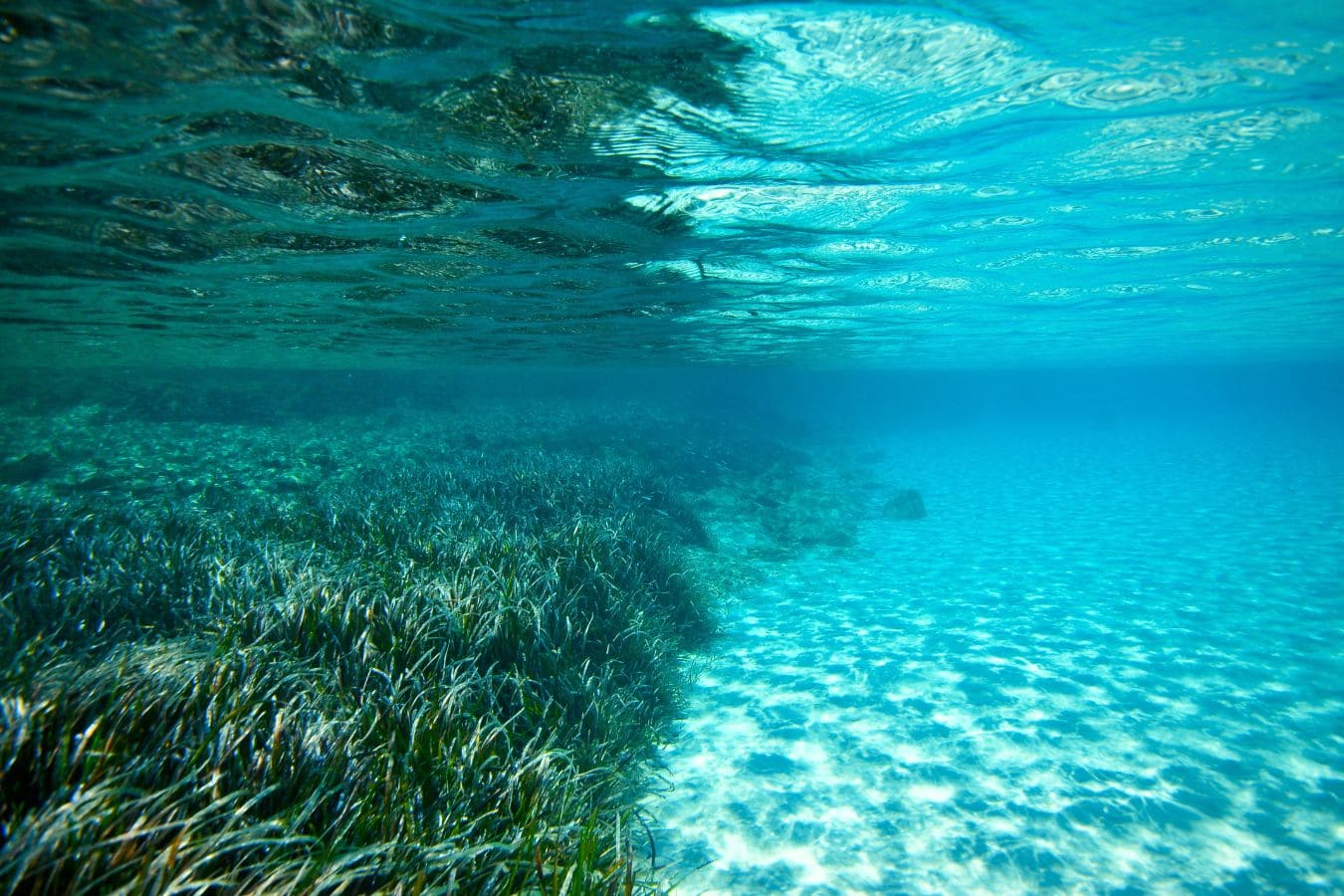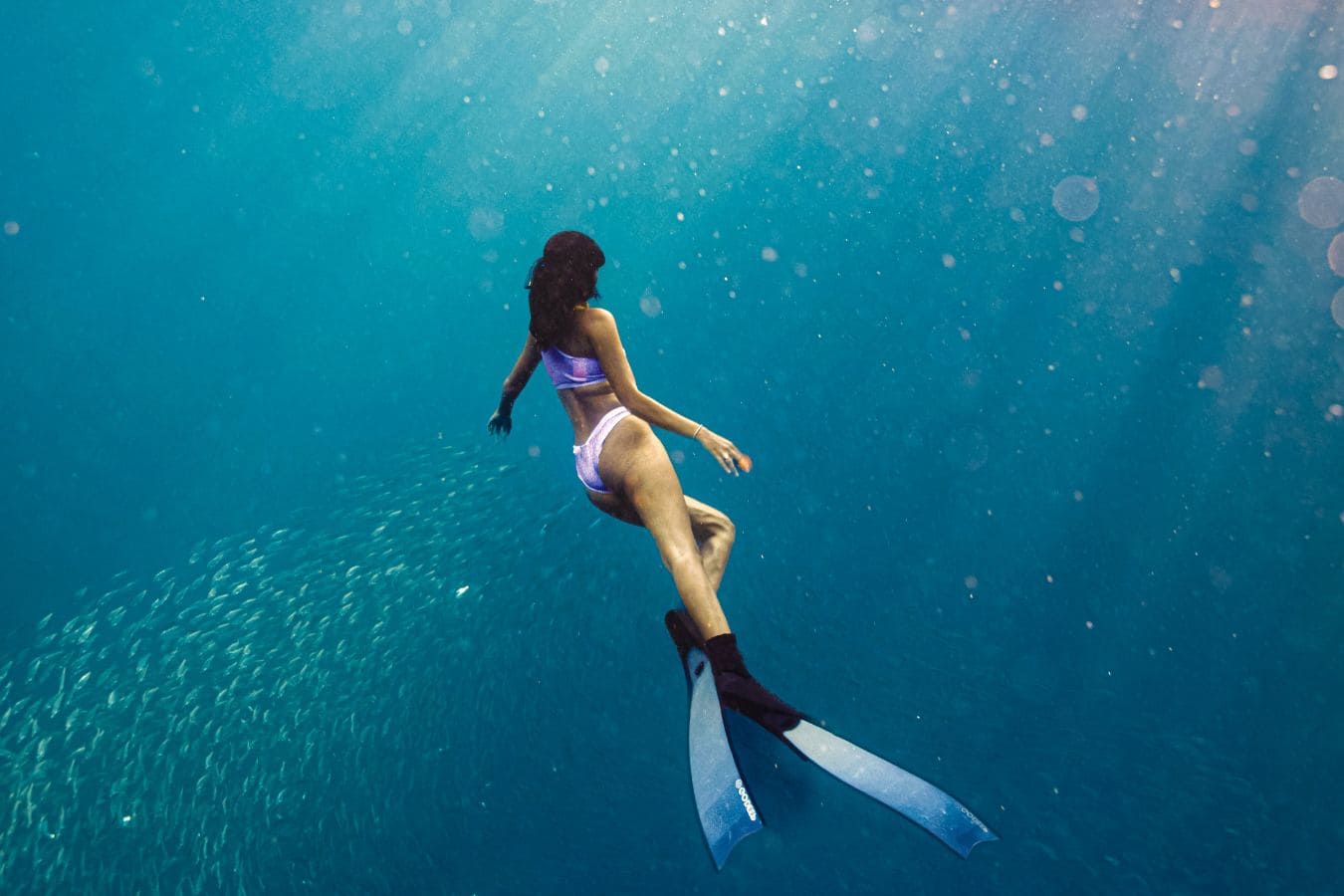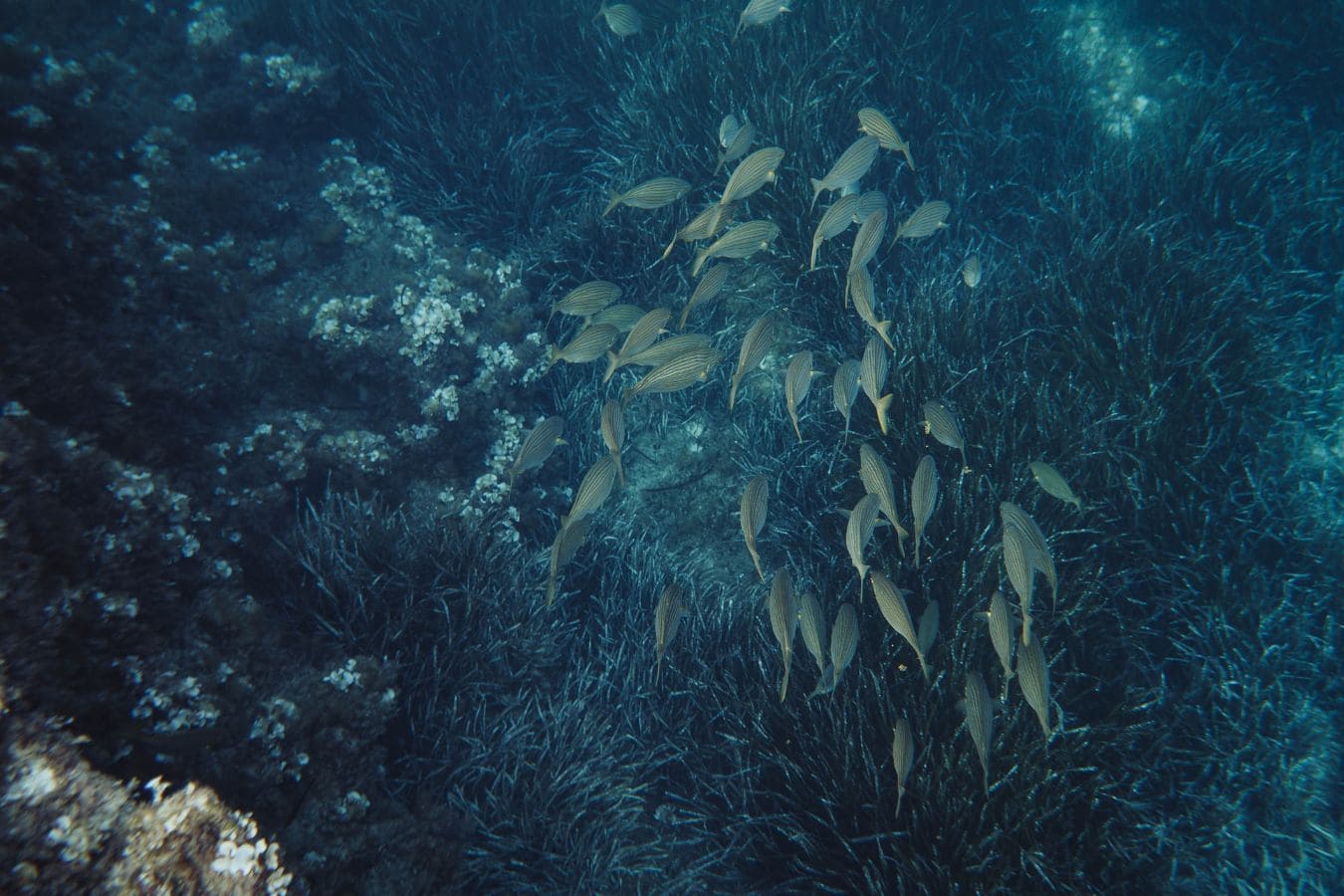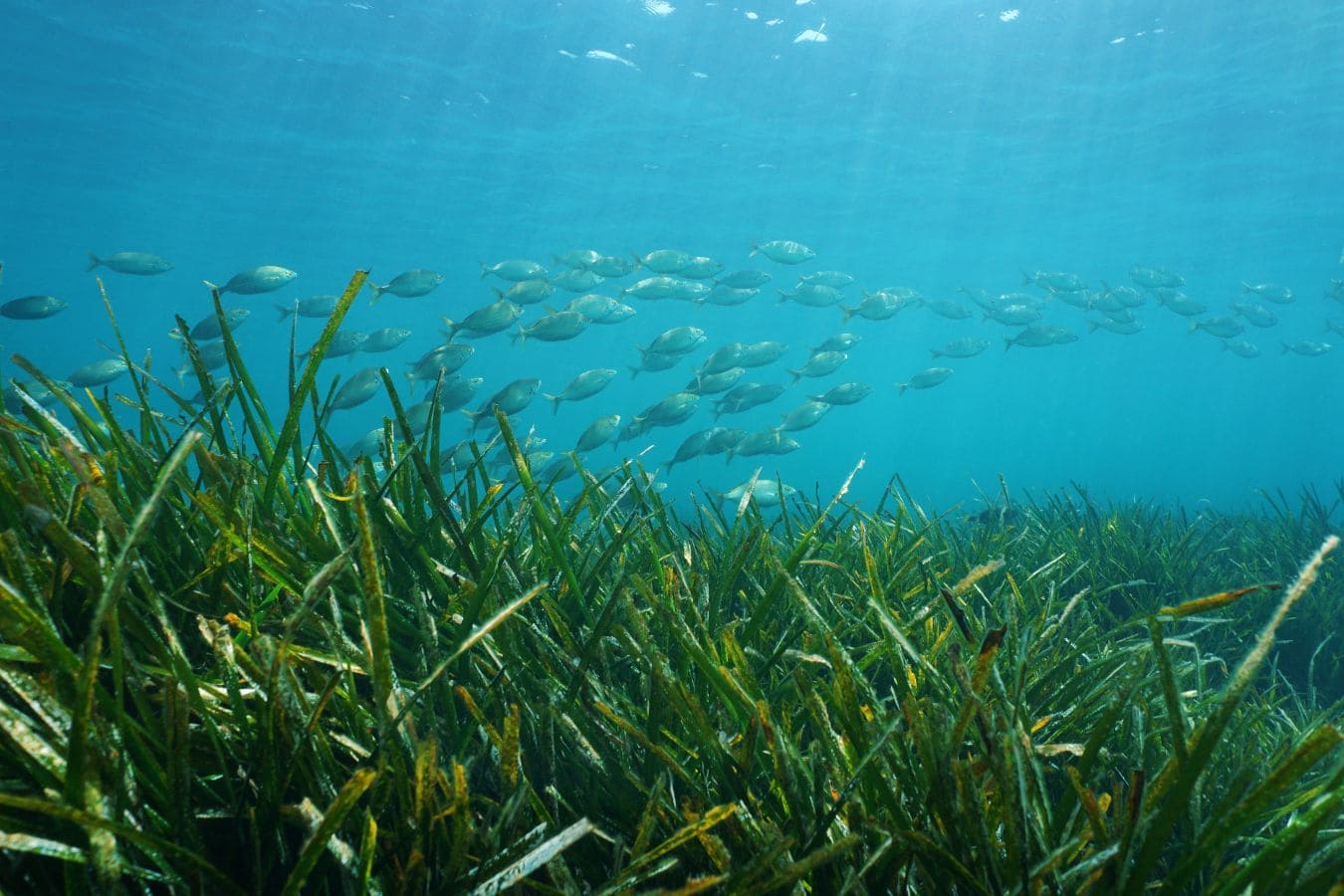Menorca is an ideal destination for snorkeling enthusiasts. Its crystal-clear waters and diverse underwater landscapes make it a paradise for discovering the marine world without the need for complex diving equipment. The island, declared a UNESCO Biosphere Reserve in 1993, has had a Marine Biosphere Reserve since 2019, which protects its valuable marine ecosystems and biodiversity.
Menorca’s underwater richness is largely due to its seagrass meadows of Posidonia oceanica, a marine plant endemic to the Mediterranean. These meadows not only oxygenate and maintain water transparency but also provide refuge and food for a wide variety of marine species. It’s important to remember that Posidonia is essential for marine life, so it should not be stepped on or uprooted.

The Best Snorkeling Routes in Menorca
Here are some of the best snorkeling routes on the island:
Northern Menorca Marine Reserve: From Cavalleria to Fornells, this protected area offers seabeds full of biodiversity. You can see large schools of fish, starfish, and even octopuses hiding among the rocks.
Punta Prima and the Sunken Plane: In the south of Menorca, you’ll find the famous sunken plane, a spectacular dive spot where fish have created a fascinating ecosystem inside.
Cala en Brut: Perfect for those looking for crystal-clear waters and rocky formations that serve as habitats for a wide variety of fish and starfish.
Cala Morell: With a gradual depth, this cove is ideal for both beginners and more experienced divers. Common species found here include groupers and barracudas.
Cales Coves: A magical spot where, in addition to marine life, you can see ancient burial caves carved into the rock, some of which are partially submerged in the sea.

Marine Species You Can Find
If you decide to explore Menorca’s seabeds, here’s a list of the most common species you might encounter:
- Serranus scriba (Lobsterfish): A 30 cm fish with a distinctive blue spot on its belly. Found in rocky seabeds and Posidonia meadows.
- Oblada melanura (Common rainbowfish): A curious and trusting fish with a silvery gray color and a black spot at the base of its tail fin.
- Muraena helena (Moray eel): Resembling a sea snake, it usually inhabits rocky areas and is recognized by its sharp teeth and mottled skin.
- Diplodus vulgaris (Common two-banded seabream): Very common in various seabeds, it is distinguished by its double black stripe at the base of its tail and head.
- Sarpa salpa (Salema): This herbivorous fish is found near Posidonia meadows. Its distinctive golden-striped coloration makes it easily identifiable.
- Chromis chromis (Chromis): A small, dark fish that usually swims in large schools near the surface.
- Octopus vulgaris (Common octopus): It hides among rocks and changes color to camouflage itself. It can be difficult to spot, but with a little patience, it is often visible at the sea bottom.
- Balistes carolinensis (Triggerfish): Recognized by its oval body and strong jaw. Although not very common, it can be found in warm waters among rocks and meadows.
- Scorpaena scrofa (Scorpaenidae): It camouflages perfectly in rocky seabeds, making it hard to detect. Be careful, as its sting can be painful.

Tips for Responsible Snorkeling in Menorca
To enjoy Menorca’s biodiversity and contribute to its conservation, follow these recommendations:
- Don’t touch or step on Posidonia: It’s crucial for the health of the marine ecosystem.
- Don’t feed the fish: Altering their natural behavior affects the food chain and marine balance.
- Use eco-friendly sunscreens: Chemicals in sunscreens can affect water quality and harm marine life.
- Avoid collecting shells or touching marine animals: Keep a distance and observe them in their habitat without disturbing them.
Explore Menorca with ARTIEM
For a safe and unique snorkeling experience, ARTIEM Hotels helps you discover the best corners of the island. Our team of experts organizes daily kayak trips, or if you prefer, we can guide you to the best snorkeling routes in Menorca for a solo adventure. At each of our locations, we offer personalized recommendations and help you find the best coves and beaches with crystal-clear waters to make your snorkeling experience unforgettable.
Discover the other side of Menorca beneath the sea and dive into the beauty of its waters. See you in the blue!
